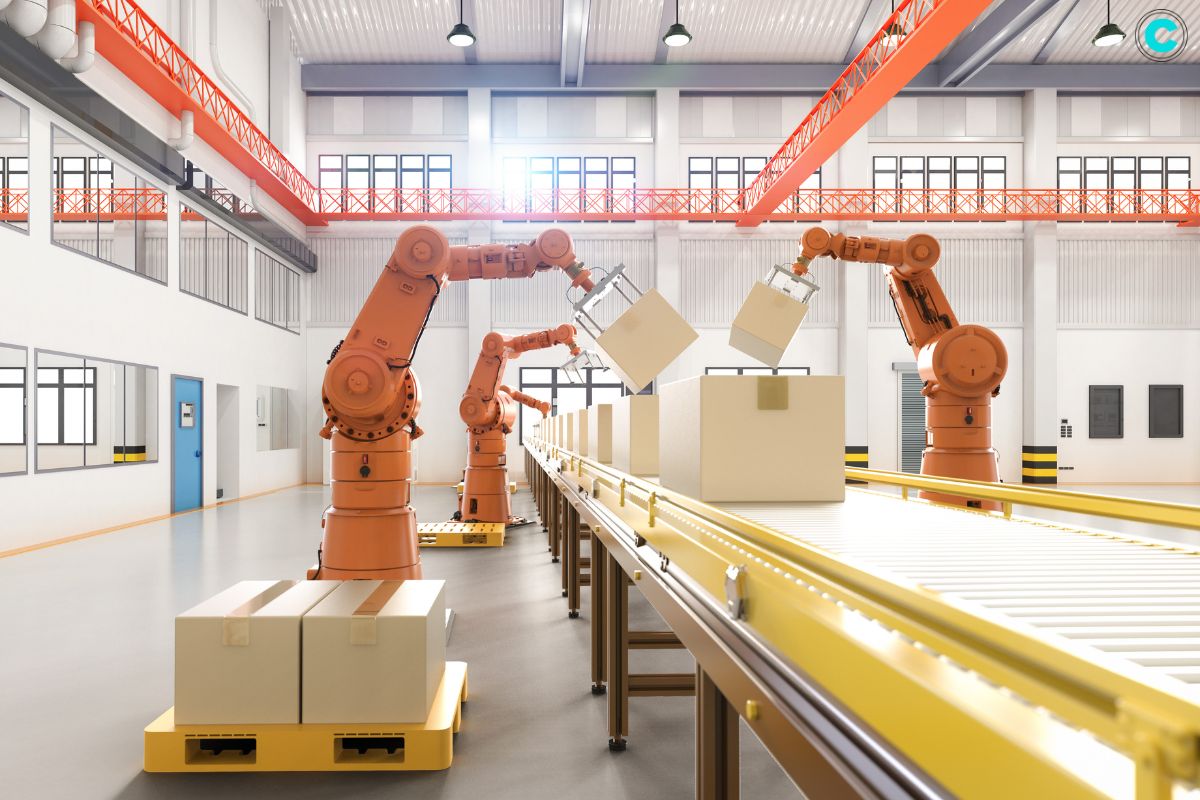Robotic Process Automation (RPA) is a super useful technology that helps businesses work smarter and save money. Basically, it automates all those boring and repetitive tasks that usually take up a lot of time. By doing this, RPA frees up employees to focus on the more exciting and creative parts of their jobs. This not only boosts innovation but also helps the business grow. In this article, we’ll explore what RPA is all about, why it’s so great, and how it can be used in different areas. Plus, we’ll take a peek at what the future holds for this amazing technology! So, let’s dive in and discover the world of RPA together!
What is Robotic Process Automation?
It refers to the use of software robots or “bots” to automate repetitive, rule-based tasks within business processes. These bots can perform a wide range of functions, from data entry and transaction processing to complex decision-making tasks. Unlike traditional automation, RPA is designed to interact with digital systems in the same way that a human would, using the user interface to complete tasks.
Benefits of Robotic Process Automation
1. Increased Efficiency
One of the most significant benefits is the dramatic increase in efficiency. Bots can work 24/7 without breaks, ensuring that tasks are completed faster and with fewer errors compared to human workers. This continuous operation significantly reduces turnaround times for various business processes.
2. Cost Savings
Implementing it can lead to substantial cost savings. By automating mundane and repetitive tasks, companies can reduce the need for manual labor, cutting down on payroll expenses. Additionally, bots help minimize errors, reducing the costs associated with correcting mistakes.
3. Improved Accuracy

Human errors are inevitable, especially when performing repetitive tasks. It ensures that tasks are executed with a high degree of accuracy and consistency, reducing the risk of mistakes and enhancing the quality of output.
4. Enhanced Compliance
Compliance is a critical concern for many industries, particularly those that are heavily regulated. It can help ensure that processes are carried out in accordance with regulatory requirements, maintaining a detailed audit trail and reducing the risk of non-compliance.
5. Scalability
As businesses grow, the demand for efficient and scalable solutions becomes paramount. It can be easily scaled up or down to meet changing business needs. New bots can be deployed quickly to handle increased workloads, ensuring that operations run smoothly even during periods of rapid growth.
Applications of Robotic Process Automation
1. Finance and Accounting
In finance and accounting, it is used to automate tasks such as invoice processing, reconciliations, and financial reporting. By handling these routine activities, RPA allows finance professionals to focus on strategic planning and analysis.
2. Human Resources
RPA is transforming human resources by automating processes like employee onboarding, payroll processing, and benefits administration. This not only speeds up these functions but also ensures accuracy and compliance with labor laws.
3. Customer Service
Customer service departments are leveraging it to handle common queries, process orders, and manage returns. Bots can provide instant responses to customer inquiries, improving service levels and freeing up human agents to tackle more complex issues.
4. Supply Chain Management

In supply chain management, it helps streamline operations by automating inventory management, order processing, and shipment tracking. This leads to improved accuracy, reduced costs, and better overall efficiency.
5. Healthcare
The healthcare industry is utilizing it to manage patient records, schedule appointments, and process insurance claims. By automating these tasks, healthcare providers can focus more on patient care and less on administrative work.
Future Trends in Robotic Process Automation
1. Integration with AI and Machine Learning
The future of it lies in its integration with artificial intelligence (AI) and machine learning. By combining RPA with AI, businesses can automate more complex tasks that require decision-making and predictive analysis. This will lead to more intelligent and adaptive automation solutions.
2. Increased Adoption Across Industries
As the benefits of it become more widely recognized, adoption is expected to increase across various industries. Sectors such as retail, manufacturing, and logistics are likely to see significant growth in RPA implementation.
3. Advanced Analytics
Future RPA solutions will incorporate advanced analytics to provide deeper insights into business processes. By analyzing data from automated tasks, companies can identify areas for improvement, optimize workflows, and make data-driven decisions.
4. Enhanced User Interfaces
Developers are focusing on creating more intuitive and user-friendly interfaces for RPA tools. This will make it easier for non-technical users to design and manage bots, further democratizing their use of it.
5. Cloud-Based RPA
The shift towards cloud-based RPA solutions is another emerging trend. Cloud-based RPA offers greater flexibility, scalability, and cost-effectiveness compared to traditional on-premise solutions. This trend is expected to accelerate as more businesses move their operations to the cloud.
Best Practices for Implementing Robotic Process Automation

1. Start Small
When implementing, it is advisable to start with small, manageable projects. This allows businesses to test the technology, measure its impact, and make necessary adjustments before scaling up.
2. Define Clear Objectives
Clearly defining the objectives of your RPA implementation is crucial for success. Identify the specific processes you want to automate, the expected outcomes, and how you will measure success.
3. Involve Key Stakeholders
Involving key stakeholders from the beginning ensures that everyone understands the benefits and potential challenges of RPA. This collaboration helps gain buy-in and support from various departments.
4. Monitor and Optimize
Continuous monitoring and optimization are essential for maximizing the benefits of it. Regularly review the performance of your bots, identify areas for improvement, and make necessary adjustments to enhance efficiency.
5. Invest in Training
Investing in training for your employees ensures that they have the skills and knowledge to manage and maintain your RPA solutions effectively. This is particularly important as RPA tools become more sophisticated and integrated with other technologies.
FAQs
1. What is the difference between robotic process automation and traditional automation?
It differs from traditional automation in that it mimics human interactions with digital systems, using the user interface to complete tasks. Traditional automation typically involves more complex programming and system integration.
2. Can robotic process automation be integrated with existing systems?
Yes, it can be integrated with existing systems. RPA tools are designed to work with a wide range of applications, allowing businesses to automate tasks across different platforms without significant changes to their IT infrastructure.
3. How long does it take to implement a robotic process automation solution?
The time required to implement a robotic process automation solution varies depending on the complexity of the tasks being automated and the readiness of the organization’s IT infrastructure. However, most RPA projects can be completed within a few weeks to a few months.
4. Are there any risks associated with robotic process automation?
While it offers numerous benefits, there are some risks to consider. These include potential job displacement, security concerns, and the need for ongoing maintenance and updates. It is important to address these risks through careful planning and management.
5. How can businesses measure the success of their robotic process automation initiatives?
Businesses can measure the success of their robotic process automation initiatives by tracking key performance indicators (KPIs) such as cost savings, error reduction, processing time, and employee satisfaction. Regularly reviewing these metrics helps ensure that the RPA implementation is delivering the desired outcomes.
Robotic process automation is revolutionizing the way businesses operate, offering significant benefits in terms of efficiency, cost savings, and accuracy. By understanding the key concepts, applications, and future trends of RPA, companies can harness its full potential to drive growth and innovation.






